Waking stones
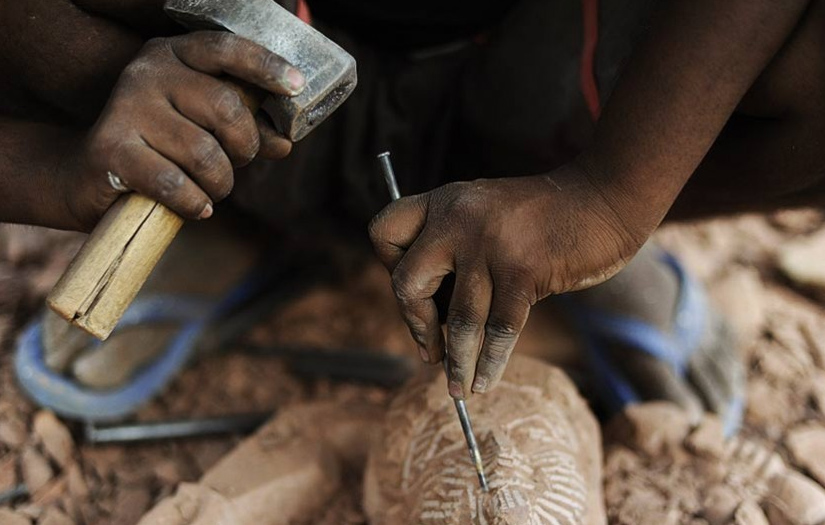
Gwalior, Madhya Pradesh, is home of the great fort described as “the pearl in the necklace of the forts of Hind” by Mughal emperor Babur. The breathtaking structure stands on a solid sandstone hillock, witness to many a great wars and sacrifices in the history of India. Built between the 8th to the 15th century, the fort is an architectural wonder, enclosing within itself, water tanks, temples and palaces; decorated with numerous beautiful sculptures inside and blue and yellow tiled walls outside.
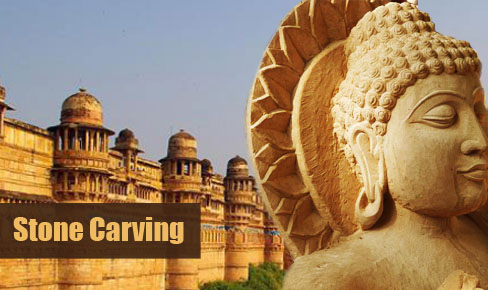
The Gwalior fort also boasts of some of the most beautiful figures of gods, deities and mythical creatures in stone and the legacy of bringing stone to life continues centuries later, in the streets of the modern city.
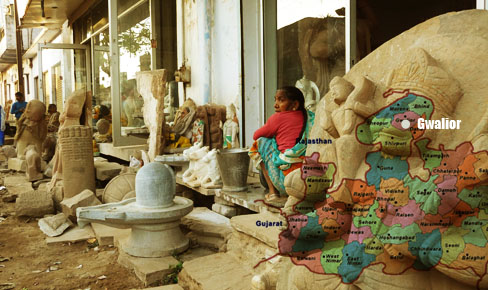
Stone Carving Gwalior – Gainda Waali Sadak
In a short stretch on the road known as “Gainda Waali Sadak”, is a cluster of shops that forms the hub of stone carving in the area. This pool of ancestral talent makes their living in this centre, serving local temples, just waiting to be polished and brought out into the world.Soapstone, granite, marble; but mostly sandstone, have been given artistic forms in the homes and workshops of the sculptors, or “murtikaar”s, since the time of the Scindia (also Shinde / Sindhia) rule in the 18th and 19th centuries.

One such craftsman, Deepak Vishwakarma, whose father madehousehold articles like “chakla”, “sil-vatta” etc., decided at a young age, that he wanted to turn stone into beautiful statues instead. He picked up his hammer and chisel, and learnt to carve such wonderful images over the years, that it won him a national award.
The craftsmen bring red and white “Gwalior mint” sandstone from nearby quarries to their homes; and then embark on the arenaceous journey of transforming cold lifeless blocks into emotive faces and graceful figures.
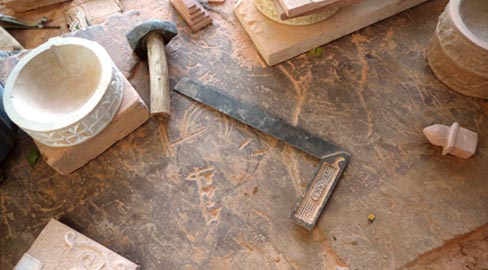
From breaking large slabs of stone into smaller pieces, to shaping and sculpting fine details, every process is done by hand, with the help of hammers and chisels of various shapes and sizes. An electric grinder is used at times, to quicken sanding and filing.
The sculpture is rubbed with a piece of stone, called “batti”, and then with sandpaper, for final buffing and finishing. A wash with water reveals the final, polished work of art, soon to become a divine object.
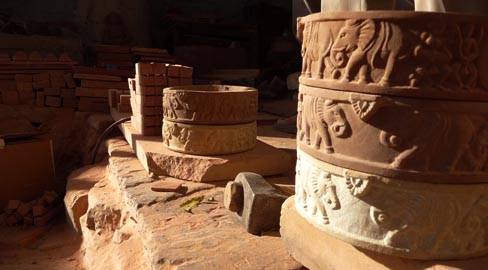
From the same block of stone, the murtikaars may craft simple Siva Lingas to intricate bejeweled goddesses, to the peaceful, meditative Buddha. Unfinished statues and artifacts in marble are even brought here from Jaipur, to be released from the solid shadows of their stone cover into their destined manifestations. With a few machines to ease the processes the craftsmen can even make exquisite utility and decorative articles.
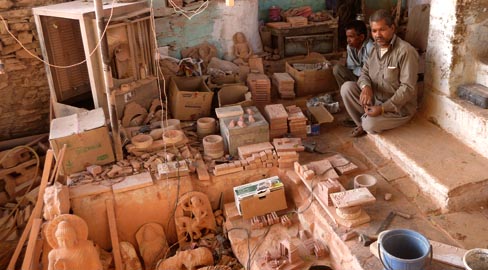
A workshop enveloped in suspended sand, surrounded by large and small slabs and boulders, a crackling radio trying to be heard amidst the clanking of metal against stone… As murtikaars practice their craft, and the scraping and screeching grinder throws powdered stone into the air, from this cloud of dust emerge and awaken, the admirable images of the gods.
Read more about craft ~ Gaatha.org
~



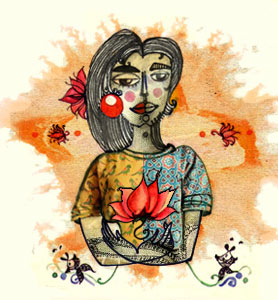
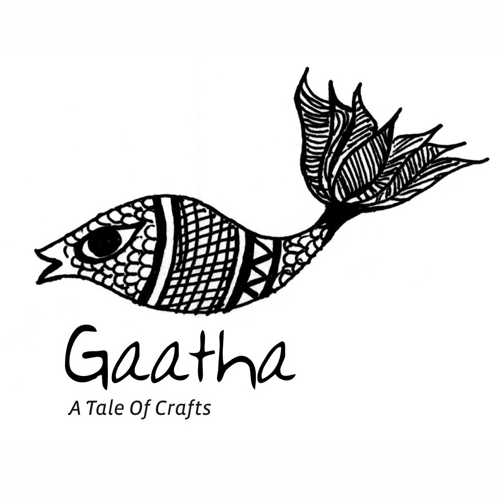


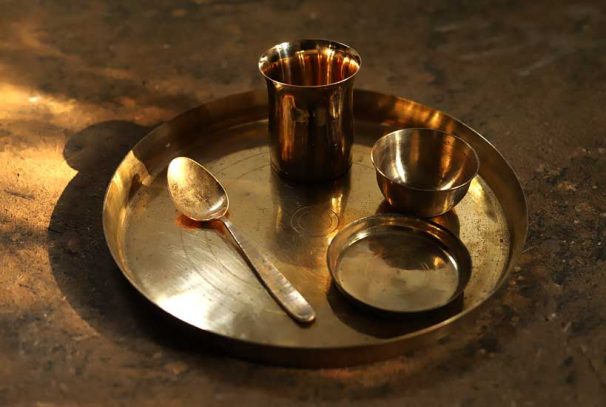
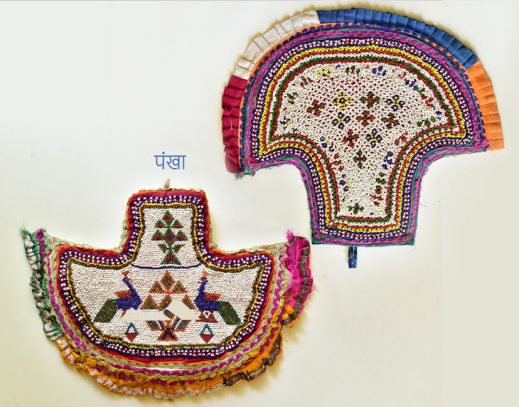
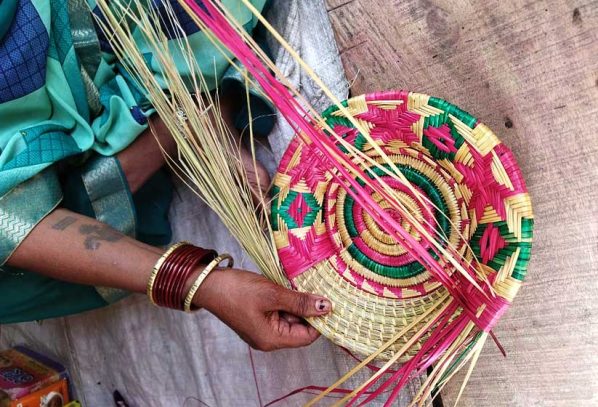

anupam bansal
nice
Chandresh dubey
Please send information of hands made people stone moorti .and please share ur contact no.soon